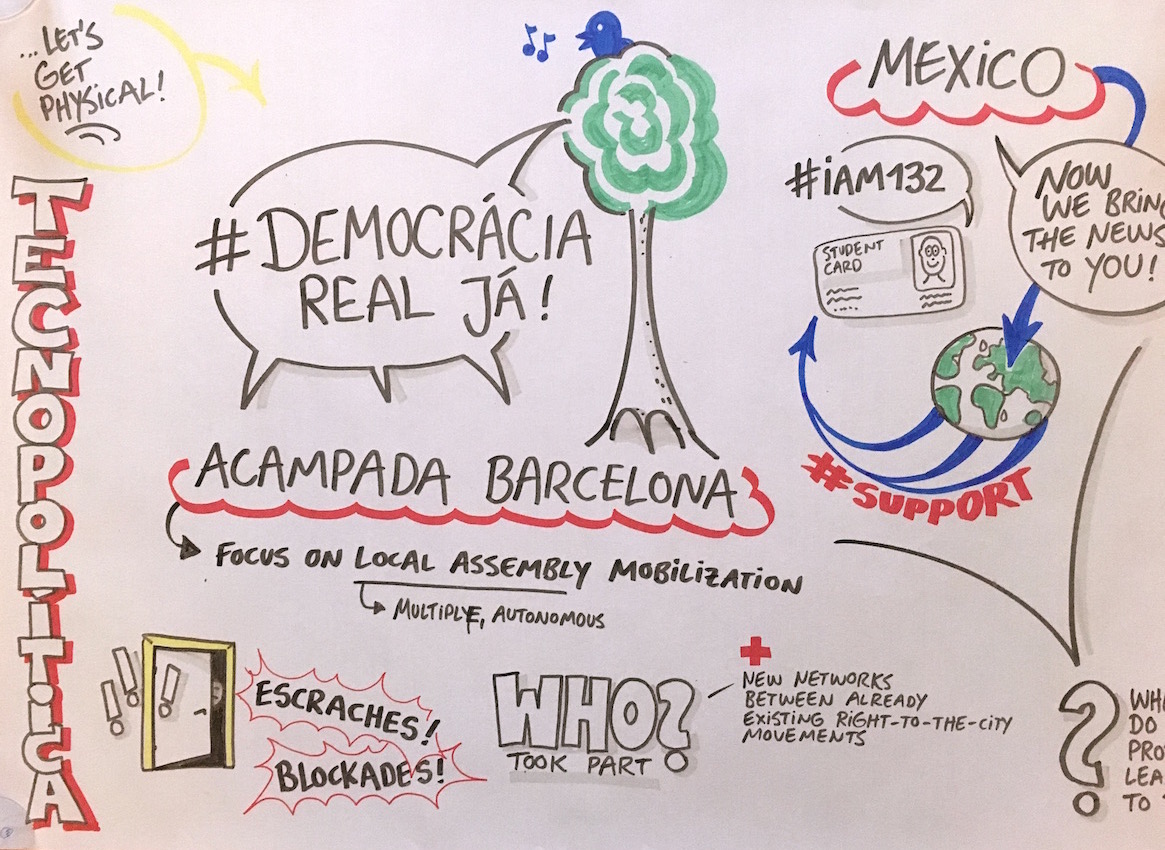Guiomar Rovira
CONNECTED MULTITUDE – DIE POLITIK DER NETZE
»Multitud Conectada«, die verknüpfte Multitude, ist ein Begriff der spanischen Tecnopolítica-Bewegung, die aus den städtischen Protesten und Raumnahmen im Jahr 2011 (bekannt unter 15M) hervorgegangen ist.
»La multitud conectada es entonces una constelación performativa que emana de múltiples acciones individuales, capaz de acuerparse in situ y a la vez de sincronización en redes. Son varias sus características que la distinguen de otro tipo de actores colectivos, a pesar de que la multitud conectada nunca se da en estado puro. Quizás la metáfora más atinada de la red fue la que hicieron Deleuze y Guattari (1997) al hablar del rizoma como constitutivamente impuro e inaprensible. (...) La política de la multitud conectada precisa de las asambleas como una forma de encarnar la toma de decisiones, de hacerla física, aunque siempre la asamblea es una metonimia, una puesta en escena de la parte por el todo. De alguna manera, la capacidad ›soberana‹ de la asamblea no es tal. La multitud conectada va más allá y actúa y se modula a su modo, incluso para encarnarse o para evidenciar el desencuentro (…).«

»As networks, those insurgencies cannot be defined as a finite number of parts but are multiplicities organized around the principle of perpetual inclusion. (...) It is both the open unity and the heterogeneous flow of a networked structure that allows individual participation in building the commons without mediation or representation. (…)
This form of ›self-politics‹ across connected multitudes is linked to what Manuel Castells* calls ›mass self-communication‹: the possibility that people can be producers/receivers of their own messages and can recombine them, remixing codes and formats, diversifying, and multiplying the points of entry in the communication process. Being a node in the network is to exist inseparably from others and makes evident the impossibility of closing the system. The difference between witnessing a phenomenon and being part of it (being ›connected‹) comes to mind. Networks do not exist in a fixed totality. They remain incomplete and open, an area can be destroyed and another one grows, like in a rhizome.«
* Manuel Castells: Networks of Outrage and Hope. Social Movements in the Internet Age. Cambridge: MA, Polity Press, 2012